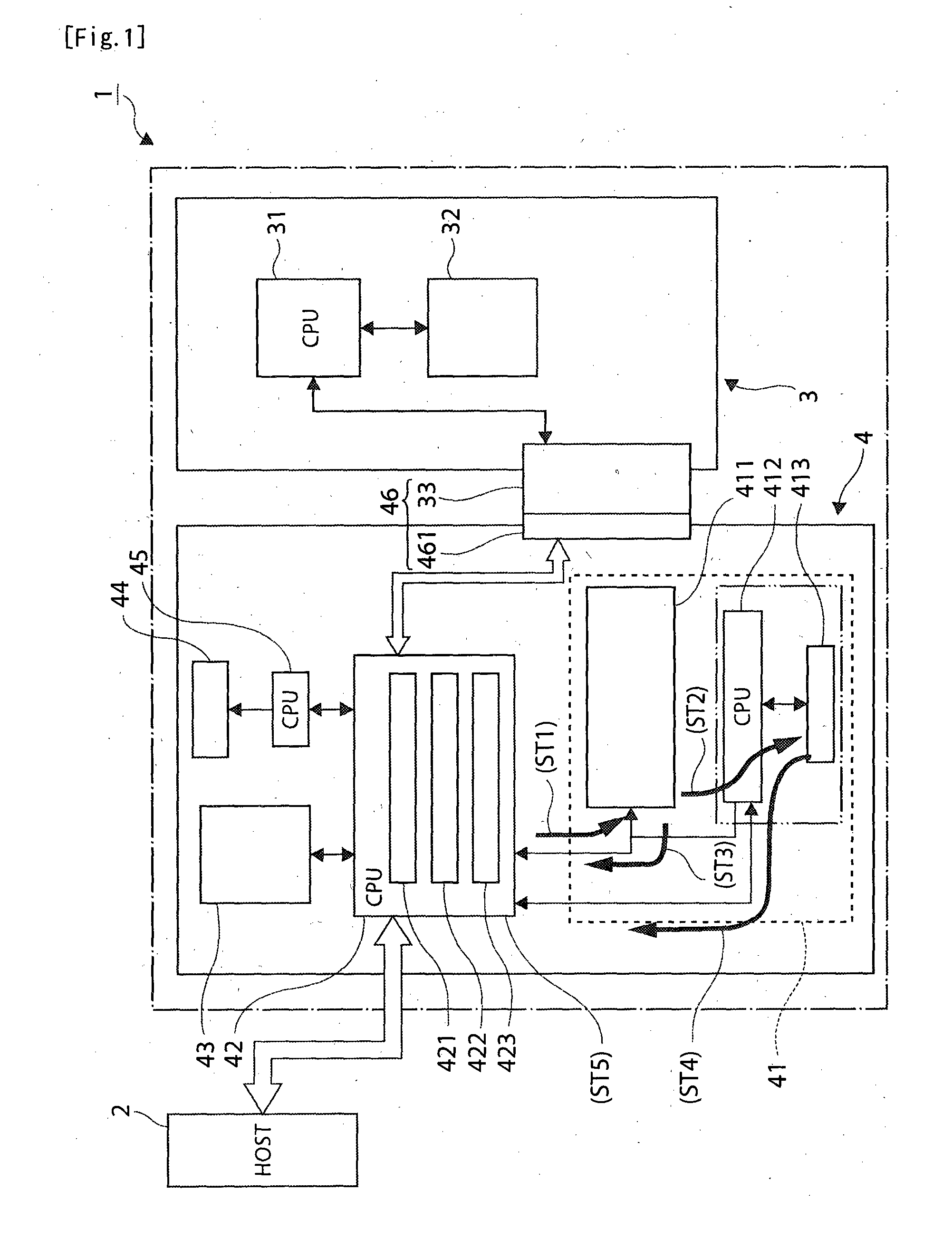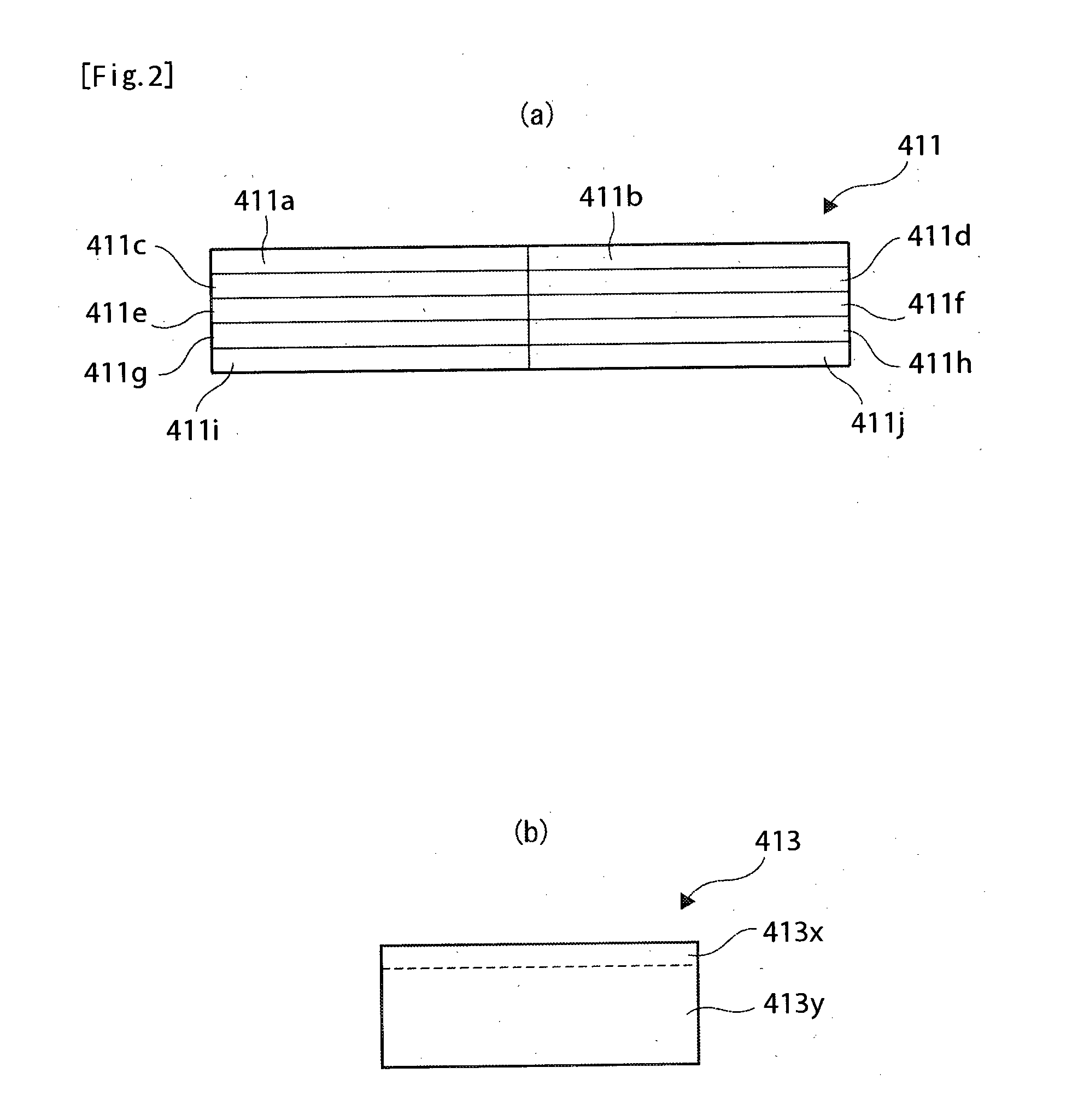Fiscal Printer
a printer and fiscal memory technology, applied in the field of fiscal printers, can solve the problems of easy deletion, change, and other tampering of fiscal memory financial information, and achieve the effects of reducing tampering, reducing write speed, and reducing write speed
- Summary
- Abstract
- Description
- Claims
- Application Information
AI Technical Summary
Benefits of technology
Problems solved by technology
Method used
Image
Examples
embodiment 1
[0040]Writing and reading fiscal information in the first embodiment of the invention is described next with reference to FIG. 2. FIG. 2 describes memory areas in the first and second memory units in the first and second embodiments. More specifically, FIG. 2 (a) shows memory areas in the first memory unit, and FIG. 2 (b) describes memory areas in the second memory unit . When the fiscal control CPU 42 writes fiscal information to the first memory unit 411 of the fiscal memory module 41 (step ST1) , the memory control CPU 412 that monitors writing calculates a first hash value based on all fiscal information written to the first memory unit 411, and writes to the second memory unit 413 (step ST2).
[0041]More specifically, the fiscal control CPU 42 writes fiscal information sequentially to memory areas 411a, 411b, . . . in the first memory unit 411 as shown in FIG. 2 (a). When fiscal information is written to the first memory unit 411 by the fiscal control CPU 42, the memory control C...
embodiment 2
[0046]Writing and reading fiscal information in a second embodiment of the invention is described next with reference to the same FIG. 2. Note that like parts in this and the first embodiment are identified by like reference numerals, and repeated description thereof is omitted below.
[0047]The operation whereby the fiscal control CPU 42 writes fiscal information to the first memory unit 411 of the fiscal memory module 41 (step ST1) is the same as in the first embodiment described above. The memory control CPU 412 that monitors this writing operation calculates a single hash value based on at least two units of information including a single unit of appended fiscal information (the fiscal information written to any one of memory areas 411a, 411b, . . . ) and the first hash value already written to the second memory unit 413. The calculated hash value is then written as the first hash value to the second memory unit 413 (step ST2).
[0048]More specifically, the first memory unit 411 seq...
embodiment 3
[0054]Writing and reading fiscal information by means of a third embodiment of the invention is described next with reference to FIG. 3. FIG. 3 describes memory areas in first and second memory devices according to a third embodiment of the invention. Note that like parts in this and the first and second embodiments of the invention are identified by like reference numerals, and repetitive description thereof is omitted below.
[0055]When the fiscal control CPU 42 writes fiscal information to the first memory unit 411 of the fiscal memory module 41 (step ST1), the memory control CPU 412 that monitors writing fiscal information calculates a first hash value for the fiscal information that is written, and writes the first hash value to the second memory unit 413 (step ST2).
[0056]More specifically, the first memory unit 411 is segmented into a plurality of memory areas as shown in FIG. 3 (a), the memory control CPU 412 calculates a first hash value for each memory area 411a, 411b, . . . ...
PUM
 Login to View More
Login to View More Abstract
Description
Claims
Application Information
 Login to View More
Login to View More - R&D
- Intellectual Property
- Life Sciences
- Materials
- Tech Scout
- Unparalleled Data Quality
- Higher Quality Content
- 60% Fewer Hallucinations
Browse by: Latest US Patents, China's latest patents, Technical Efficacy Thesaurus, Application Domain, Technology Topic, Popular Technical Reports.
© 2025 PatSnap. All rights reserved.Legal|Privacy policy|Modern Slavery Act Transparency Statement|Sitemap|About US| Contact US: help@patsnap.com



